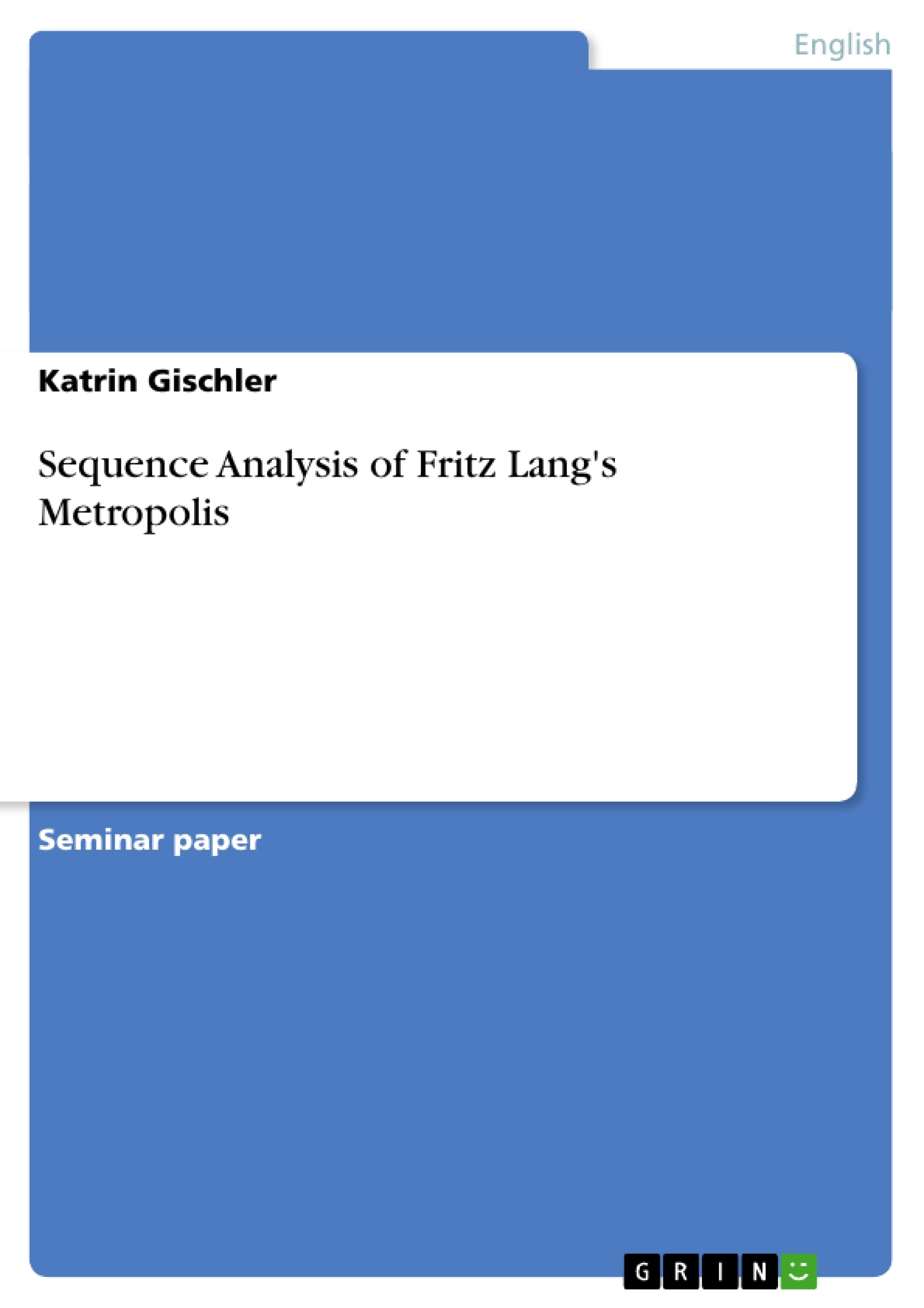Urban modernity, Berlin’s “Golden Twenties”, the cinematographic city -no other movie evokes these clichés more vividly than Fritz Lang’s Metropolis. Since its publication in 1926/27 it has ever again been praised but also brought a lot of criticism among the audience and reviewers.Metropolisstands out from the fantastic film of the silent film era and introduced a new genre in Germany, science-fiction. It compounds motifs of expressionism, “Neue[r] Sachlichkeit”, and pulp fiction. Moreover, there are elements of film noir, which connects elements of expressionism and French poetic realism. These elements became obvious in the Father-Son conflict, the existence of a double, the architecture, and the camera-and lighting effects (bright/ dark contrasts/ low-key lighting, iris shatter). Lang manipulated the lighting in Metropolis to reflect harsh contrasts between humanity and technology. Lang’s mammoth piece still has a huge impact on contemporary film as we can see inStar Wars(1977),Blade Runner(1982), and The Fifth Element(1997).
In this following paper I’m going to analyse a ten-minute sequence that starts in the eternal garden and ends after the explosion in the underworld of the workers. I will focus my analysis on editing, i.e. camera shots, and lighting since both parts play a very- if not the most- important role for the narrative ofMetropolis.Moreover, the camera shots used and some invented inMetropolisgave way for the following and contemporary films.
In this piece of work the original version ofMetropolis-which has been restored by the Friedrich-Wilhelm Murnau foundation- and was seen in the premiere on 10 January 1927, serves as a primary source.
Table of Contents:
1. Introduction
2. Sequence Analysis
3. Conclusion
Bibliography
‘The mediator between brain and hand should be the heart’.
Quotations on Metropolis
I enjoyed it beyond my wildest dreams. (Sir Arthur Conan Doyle quoted in Ray Lee: A Pictorial History of Hollywood Nudity)
The other day I saw the most foolish film. I cannot believe it would be possible to make a more foolish one. (H.G. Wells, quoted in Frankfurter Zeitung, 3 May 1927)
illustration not visible in this excerpt[1]
1. Introduction
Urban modernity, Berlin’s “Golden Twenties”, the cinematographic city -no other movie evokes these clichés more vividly than Fritz Lang’s Metropolis. Since its publication in 1926/27 it has ever again been praised but also brought a lot of criticism among the audience and reviewers. Metropolis stands out from the fantastic film of the silent film era and introduced a new genre in Germany, science-fiction. It compounds motifs of expressionism, “Neue[r] Sachlichkeit”,[2] and pulp fiction. Moreover, there are elements of film noir, which connects elements of expressionism and French poetic realism. These elements became obvious in the Father-Son conflict, the existence of a double, the architecture, and the camera-and lighting effects (bright/ dark contrasts/ low-key lighting, iris shatter). Lang manipulated the lighting in Metropolis to reflect harsh contrasts between humanity and technology.
Lang’s mammoth piece still has a huge impact on contemporary film as we can see in Star Wars (1977), Blade Runner (1982), and The Fifth Element (1997).
In this following paper I’m going to analyse a ten-minute sequence that starts in the eternal garden and ends after the explosion in the underworld of the workers. I will focus my analysis on editing, i.e. camera shots, and lighting since both parts play a very- if not the most- important role for the narrative of Metropolis. Moreover, the camera shots used and some invented in Metropolis gave way for the following and contemporary films.
In this piece of work the original version of Metropolis- which has been restored by the Friedrich-Wilhelm Murnau foundation- and was seen in the premiere on 10 January 1927, serves as a primary source.
[...]
[1] URL: http://www.geocities.com/Area51/5555/metrop3m.jpg [21.04.05]
[2] Neue Sachlichkeit – the fascination of technology
- Quote paper
- Katrin Gischler (Author), 2005, Sequence Analysis of Fritz Lang's Metropolis, Munich, GRIN Verlag, https://www.grin.com/document/47123
-

-

-

-
Upload your own papers! Earn money and win an iPhone X. -

-
Upload your own papers! Earn money and win an iPhone X. -

-
Upload your own papers! Earn money and win an iPhone X. -

-
Upload your own papers! Earn money and win an iPhone X. -

-
Upload your own papers! Earn money and win an iPhone X.

